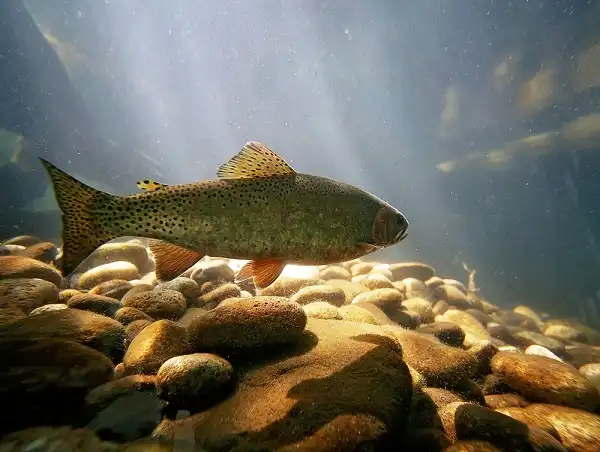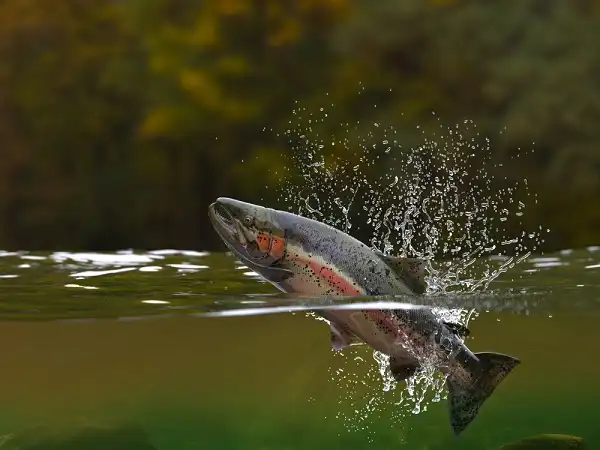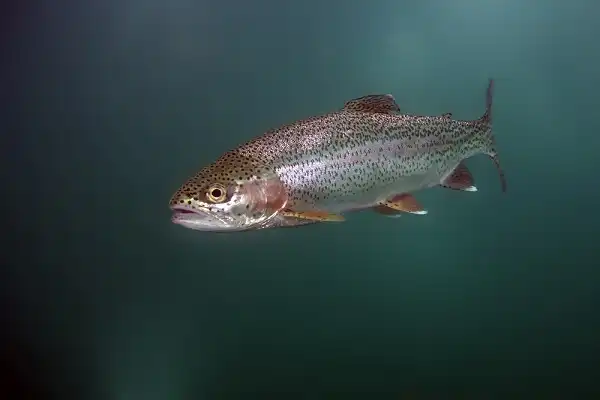If you’re an avid angler, you know that catching a trout can be a challenging and rewarding experience. Undoubtedly one of the most popular species among sports fishermen, trout are found in a variety of regions across North America, Europe, New Zealand, and Australia. Whether it’s deep-sea fishing for salmon or flatwater trolling for brown trout near your cottage lakehouse – each type requires different techniques and gear. This blog post provides essential tips on how to choose the right tackle, the bait selection process, and how to cast like a pro! Get ready to learn all there is about this amazing gamefish so you can land that perfect catch!

Trout Description
Trout are known for their bright colors and hard-fighting capabilities. They come in a wide variety of sizes, shapes, and colors depending on their species. Some common species include brown trout, rainbow trout, cutthroat trout, brook trout, and lake trout. Brown trout are one of the more popular sport fish. Rainbow trout often have a silver body with black spots along the dorsal fin and tail, making them easily identifiable. Cutthroat trout can be identified by the bright red coloration on their throat and cheeks. Brook trout are small fish but are renowned for their aggressive strikes and colorful patterns.
Trout Habitat
Trout are found in a variety of habitats, from rivers and streams to lakes, ponds, and oceans. They can be found in shallow and deep water habitats alike. In addition to their widespread distribution across North America, Europe, New Zealand, and Australia, they can also be found in the coastal waters of the Mediterranean Sea. Trout typically prefer cold temperatures with good water clarity but they can survive in different types of environments. The most preferred habitat for trout is near aquatic vegetation or structure such as logs, rocks, or weeds where they can hide from predators. The type of trout species present in a particular body of water also depends on water temperature, food availability, and habitat structure. By understanding their habitat preferences and behaviors anglers will have a better chance of catching these magnificent gamefish!
Trout Diet
Trout are opportunistic feeders and will consume a variety of food sources depending on their habitat. They typically feed on larvae, crustaceans, insects, and small fish. Many anglers use lures or flies designed to imitate the trout’s natural diet to entice them into biting. An angler needs to pay attention to the type of bait being used as well as the size and color of the lure to get a successful catch. Artificial lures such as spinners or plugs can also be used to attract trout when fishing in deeper waters. In addition, using scents such as salmon or shrimp oil can help increase your chances of landing that perfect catch!

Trout Size
Trout vary in size and weight depending on their species and location. On average, trout typically range from 10-15 inches long with a weight of up to 1 pound. However, different types of trout can reach lengths over 20 inches in length or weigh more than 10 pounds. The biggest brown trout ever caught weighed 32 lbs! Anglers should also be aware that state regulations may require the use of barbless hooks when fishing for trout as they are protected gamefish. Knowing the size and weight of your target is key to ensuring you’re using the right tackle for your next big catch!
Trout Lifespan
Trout are known for their long lifespans, with some species having lifespans of up to 11 years. Rainbow trout typically have the longest lifespan, while brown and brook trout typically have shorter lifespans. However, the age of a trout can vary greatly depending on environmental factors such as habitat quality and food availability. Trout that live in areas with good water quality and ample food sources tend to grow faster, become healthier, and live longer. In addition to their natural longevity, researchers suggest that trout may also be able to bypass the aging process to extend their life span even further. This could help explain why some rainbow trout have been caught multiple times over several decades! Knowing a bit about the average lifespan of your target species will help you plan your trips accordingly and give you an upper hand in landing that elusive trophy!
Trout Behavior
Trout behavior can be divided into two distinct categories: diurnal and nocturnal. Diurnal fish are active during the day and sleep at night, while nocturnal fish are active at night and sleep during the day. Trout tend to prefer colder temperatures and thus, they typically exhibit diurnal behavior, meaning they are most active in the early morning or late evening when it is cooler. They are usually found in deeper water during the day where they can find shelter from predators, but when conditions become favorable for feeding, trout will move towards shallower water to feed. Trout are known for their keen sense of smell which helps them to identify food sources nearby. They also have good eyesight which allows them to spot potential prey items from a distance. Trout rely on environmental cues such as light intensity, current strength, and temperature to determine whether feeding conditions are favorable or not. Additionally, trout use sound waves as a form of communication between individuals as well as a warning sign of danger from predators.

Trout Speed
Trout are surprisingly fast swimmers, able to reach speeds of up to 25 miles per hour in short bursts. In addition, they can leap out of the water and travel a distance of up to six feet while in flight. This is especially impressive considering their relatively small size. However, these bursts of speed are very short-lived and trout usually stick to swimming at a slower pace when traveling long distances. The speed and agility of trout make them an incredibly difficult target for anglers who rely on conventional methods such as casting or trolling. As such, anglers need to have an understanding of the behavior and speed capabilities of trout to be successful in catching them.
Trout Hunting
Trout hunting is an exciting and rewarding activity that requires patience and skill. When it comes to trout fishing, understanding the behavior and speed of trout can be the difference between success and failure. Trout has remarkable agility which allows them to quickly react to threats or capture prey. They are also incredibly fast swimmers, capable of reaching speeds up to 25 miles per hour in short bursts. Furthermore, they have a keen sense of smell that helps them detect food sources nearby. They typically feed in the early morning or late evening when temperatures are cooler. Additionally, they tend to move towards shallower waters or riffles when conditions become favorable for feeding so anglers should keep this in mind when looking for a good spot to fish. Trout also rely on sound waves as a form of communication between individuals and as warnings of danger from predators so anglers should take care not to make too much noise when fishing. In addition to their predatory behavior, trout also engage in courtship activities during spawning season which can often be observed in shallow water near stream beds or riffles.

Conclusion
In conclusion, trout are incredibly swift and agile creatures which makes them an exciting challenge for anglers. They possess remarkable swimming speed as well as a fast reaction time due to their lateral line system which allows them to quickly detect movement in the water. Additionally, they have an incredible sense of smell that helps them locate food sources nearby. Furthermore, they may also display territorial behavior during the spawning season or when defending their homes from intruders which can help anglers identify areas with established resident fish. By understanding both the behavior and speed capabilities of trout, anglers can dramatically increase their chances of success on the water!
Frequently Asked Question


